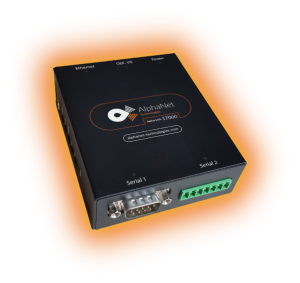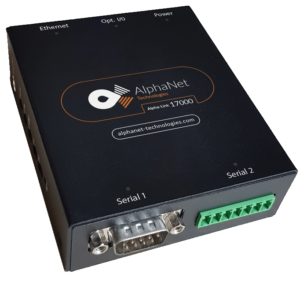Modbus is a communication protocol that has been widely used in industrial control systems for decades. It was developed by Modicon in 1979 and has since become a standard for communication between various industrial devices such as programmable logic controllers (PLCs), remote terminal units (RTUs), and human-machine interfaces (HMIs). Modbus RTU is a variation of this protocol that uses a serial communication format.
A Modbus RTU gateway is a device that allows Modbus RTU devices to communicate with other devices or systems that use a different communication protocol. In essence, it acts as a bridge between Modbus RTU devices and other devices or systems that use protocols such as Modbus TCP, Ethernet/IP, or BACnet.
The gateway usually consists of a hardware device and software that enables the translation of the Modbus RTU protocol to the target protocol. The hardware device typically has one or more serial ports for connecting Modbus RTU devices and one or more Ethernet ports for connecting to other devices or systems.
The software component of the gateway provides the necessary translation between the Modbus RTU protocol and the target protocol. This translation is typically accomplished through the use of drivers that are specific to each protocol. These drivers allow the gateway to read and write data between the two protocols, ensuring that the data is transmitted correctly.
The main advantage of using a Modbus RTU gateway is the ability to connect Modbus RTU devices to other devices or systems that use a different communication protocol. This allows for greater flexibility in system design and integration. For example, a Modbus RTU device can be integrated into a larger system that uses Modbus TCP without the need for costly and time-consuming rewiring of the system.
Another advantage of using a Modbus RTU gateway is the ability to extend the range of Modbus RTU networks. Modbus RTU is a serial protocol that has a limited range due to its use of RS-485 or RS-232 communication standards. A Modbus RTU gateway can extend the range of the network by converting the serial Modbus RTU protocol to a network protocol such as Ethernet, which has a much longer range.
Modbus RTU gateways are commonly used in various industries, including manufacturing, oil and gas, energy management, and building automation. They are particularly useful in situations where there are multiple Modbus RTU devices that need to be integrated into a larger system that uses a different communication protocol. Examples of such systems include supervisory control and data acquisition (SCADA) systems, building automation systems, and energy management systems.
A Modbus RTU gatewayis used to connect Modbus RTU networks to other Modbus networks or to other communication protocols. It acts as a bridge between different networks, allowing data to be exchanged between them. The gateway is responsible for translating the data format between the networks and ensuring that the data is delivered to the correct destination.
Modbus RTU gateway applications are found in a wide range of industries, including manufacturing, energy, transportation, and building automation. They are used to connect devices such as sensors, actuators, and controllers to a central control system. Some common Modbus RTU gateway applications include:
Protocol Conversion: Modbus RTU gateways are often used to convert data from one protocol to another. For example, they can be used to convert Modbus RTU data to Modbus TCP/IP data, allowing devices on different networks to communicate with each other.
Remote Monitoring: Modbus RTU gateways can be used to monitor remote devices and systems. They can be used to collect data from sensors and other devices and send it back to a central control system for analysis.
Device Integration: Modbus RTU gateways can be used to integrate devices from different manufacturers into a single control system. They can be used to connect devices that use different communication protocols or that have different data formats.
Data Acquisition: Modbus RTU gateways can be used to acquire data from legacy systems that use Modbus RTU protocol. They can be used to connect these systems to modern control systems and allow the data to be analyzed and used for decision-making.
Energy Management: Modbus RTU gateways can be used in energy management applications to monitor and control energy consumption in buildings and industrial processes. They can be used to collect data from sensors and control devices such as HVAC systems, lighting, and power distribution systems.
Process Control: Modbus RTU gateways can be used in process control applications to monitor and control manufacturing processes. They can be used to collect data from sensors and control devices such as motors, valves, and pumps.
Modbus RTU gateway applications play a critical role in industrial automation and control systems. They allow devices to communicate with each other regardless of the communication protocol or data format used, enabling more efficient and effective control and monitoring of industrial processes.


